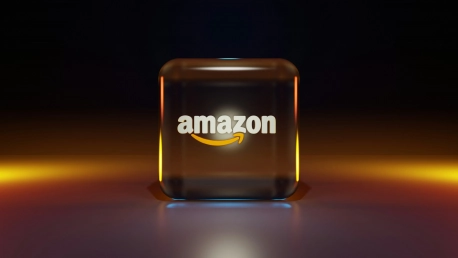Amazon has recently announced a delay in the launch of its Project Kuiper satellites, shifting its timeline while inaugurating a new manufacturing facility. These developments are critical steps in Amazon’s ambitious plan to deploy a Low Earth Orbit (LEO) satellite constellation designed to provide global internet connectivity. This article delves into the implications of the delay, the role of the new facility, competitive dynamics in the LEO market, and Amazon’s strategic positioning.
Project Kuiper Launch Delays
Revised Timeline
Initially, Amazon planned to kick off its satellite launches in the first half of the year, followed by customer testing before year’s end. However, unforeseen complexities have pushed the launch schedule to the fourth quarter, with customer connectivity now expected in 2025. This revised timeline reflects the challenges of aligning intricate technical requirements with ambitious deadlines. The delay, although not extensive considering the project’s magnitude, assumes significant gravity given the competitive nature of the LEO market.For a project aimed at global internet connectivity, timing is of the essence. Amazon’s delay positions it behind immediate competitors who have not only launched their satellites but are also operational. The rescheduled timeline implicates a potential risk of further lagging as technology evolves rapidly, necessitating accelerated efforts to catch up. While the revised timeline provides an opportunity for refining systems and ensuring reliability, it underscores the critical challenge Amazon faces in an industry where developments are ceaseless. The market dynamics necessitate swift adaptations to maintain competitiveness and relevance.
Competitive Implications
The delay is particularly significant in the context of a rapidly evolving market where competitors like SpaceX’s Starlink and OneWeb have already established substantial leads in the LEO satellite space. These companies are not only ahead in terms of satellite launches but also in customer acquisition and technological advancements. As both continue to expand their constellations and customer base, Amazon faces mounting pressure to accelerate its efforts and maintain relevance in this highly competitive market. The expanded timelines may give competitors further advantage, embedding a foothold more deeply within the consumer and technological sectors.Starlink’s early entry has allowed it to build a formidable network with an array of satellites providing comprehensive coverage. OneWeb too, while lesser in scale, has effectively demonstrated its service capabilities. Amazon’s delay means it must now strategize to offer differentiated value propositions, integrating superior technology, competitive pricing, and aggressive market penetration. The competitive implications extend beyond immediate launch schedules, touching upon long-term viability, consumer trust, and market adaptability. Hence, strategically adjusting this delay involves not only extended preparation but also robust countermeasures to balance competitive deficits.
New Manufacturing Facility in Kirkland
Facility Overview
A critical update in Amazon’s Project Kuiper is the formal inauguration of its new manufacturing facility located in Kirkland, Washington. Operational since April, this state-of-the-art factory is pivotal to Amazon’s production strategy, boasting a potential capacity to produce up to five satellites per day at peak operations. This high-output capability is essential for meeting competitive pressures and scaling the satellite constellation efficiently. With the facility now officially opened, Amazon has highlighted the strategic significance of this establishment in expediting its satellite production and deployment processes.The Kirkland manufacturing facility stands as a hallmark of Amazon’s commitment to scaling its space aspirations. Symbolizing more than just an advanced production unit, this facility embodies the company’s alignment with futuristic technological pursuits. It facilitates assembling sophisticated communication satellites essential for delivering high-speed internet globally. By establishing this facility, Amazon ensures that production lags are minimized, aligning closely with Project Kuiper’s ambitious deployment goals. The factory’s strategic location in Washington also integrates seamlessly with Amazon’s broader logistical and technological ecosystems, supporting streamlined processes from manufacturing to deployment.
Technological Advancements
The facility leverages cutting-edge methods for hardware testing that significantly reduce the time required from months to mere days. These innovations ensure that satellite production can be ramped up swiftly without compromising on quality or reliability. Steve Metayer, Vice President of Production Operations for Project Kuiper, emphasized the complexity of building advanced communication satellites at scale and commended his team’s progress in establishing a robust production pipeline. The technological advancements incorporated reflect Amazon’s broader push towards innovation and operational excellence, pivotal in navigating the intricate pathways of satellite production and deployment.Building satellites of advanced technological capacity involves rigorous testing phases—each crucial in validating operational reliability. Amazon’s new methodologies effectively truncate these phases, ensuring enhanced efficiency without sacrificing critical performance metrics. Such advancements mark significant strides in ensuring that Project Kuiper remains competitive not just in quantity but in technological prowess. Steve Metayer’s acknowledgment of these complexities highlights Amazon’s strategic objectives, embedding robust framework principles designed to sustain production complexities. This approach reflects Amazon’s long-term vision, harmonizing innovation with reliable engineering practices; it fundamentally strengthens Project Kuiper’s positioning in the market.
The Competitive Landscape
SpaceX’s Lead with Starlink
Elon Musk’s SpaceX, with its Starlink project, is a prominent player in the LEO market. With over 6,000 satellites in orbit and frequent launches deploying more satellites regularly, SpaceX has established a formidable presence. Starlink’s head start places Amazon in a race to rapidly deploy its own constellation to catch up and compete effectively. The expansive growth of Starlink demonstrates not only operational efficiency but also significant market penetration, highlighting the urgency for Amazon to galvanize its efforts in the competitive landscape.SpaceX’s strategic advancements with Starlink underscore the competitive heat in the LEO satellite domain. Their rapid, consistent deployment cycles exemplify an operational model Amazon aims to approximate, albeit with technological refinements. The sheer volume of satellites SpaceX has positioned in orbit provides a comprehensive service model, attracting a diverse customer base and setting high benchmarks. For Amazon, leveraging unique advantages such as superior technological integration and global reach becomes imperative. However, the gap, both in terms of deployment and market presence, provides a multifaceted challenge requiring assertive resolutions.
OneWeb and Other Competitors
Apart from SpaceX, OneWeb also poses significant competition. With an operational satellite network serving customers, OneWeb underscores the urgent need for Amazon to expedite Project Kuiper. The competitive dynamics between these companies highlight the high stakes and rapid advancements characterizing the LEO satellite market. OneWeb’s targeted service provisions, especially in remote areas, further stress the necessity for Amazon to enhance its deployment speed and service quality.The competition is not confined to just deployment rates but also strategic service expansions. OneWeb’s successful customer acquisition model and operational efficiency signal milestones Amazon must strive to exceed. The LEO market’s dynamism involves constant technological advancements and strategic maneuvers requiring vigilance and adaptability. For Amazon, embracing these competitive dynamics implies not just accelerating Project Kuiper’s timelines but also innovating continuously. As newer entrants and existing competitors scale their operations, the tempo of adaptations will significantly influence market standings and customer trust.
Strategic and Financial Investment
Amazon’s $10 Billion Commitment
Amazon’s investment in Project Kuiper underscores the scale of its ambition, with a committed $10 billion funding to deploy a constellation of 3,236 satellites. This massive financial undertaking highlights the stakes involved and Amazon’s commitment to achieving a significant presence in the LEO market. The company aims to meet an FCC mandate requiring half of these satellites to be in orbit by mid-2026. The substantial investment reflects Amazon’s strategic intent to carve out a niche in expanding global internet access capabilities, countering competitive pressures effectively.Monetary commitments of this magnitude outline an ambitious roadmap Amazon has chartered for Project Kuiper. Meeting the FCC mandate signifies more than just compliance; it illustrates Amazon’s operational foresight and regulatory acumen. The financial invocations towards Project Kuiper mirror a synergistic alignment of resources, technological prowess, and strategic objectives. Through these investments, Amazon delineates its roadmap encompassing satellite deployment, market capture, and global connectivity enhancement. This financial impetus will drive research, manufacturing, and deployment phases, positioning Amazon as a fundamental player in the evolving satellite internet services ecosystem.
Global Presence and Marketing Strengths
Amazon’s extensive global reach and powerful marketing capabilities provide a substantial advantage in the race to expand internet access via satellite. However, the execution speed is crucial to capitalize on these strengths. The strategic investment aims to position Amazon as a key player in global connectivity efforts, aligning with broader goals of digital inclusion and accessibility. Integrating Kuiper’s deployment with Amazon’s vast logistical network provides a cohesive framework for accelerating market penetration and ensuring comprehensive service outreach.Amazon’s marketing strengths lie not only in breadth but in depth, leveraging data-driven insights to penetrate diverse markets effectively. Its established brand equity affords considerable leverage in positioning Kuiper as a reliable service. However, rapid execution becomes paramount; the LEO market’s accelerated pace leaves little room for extended delays or strategic misalignments. Cohesively aligning Kuiper’s goals with Amazon’s broader operational ecosystems would necessitate synchronization between logistical intricacies, technological integration, and customer-centric strategies. This approach predicates not just market acquisition but sustained, scalable growth delivering on the promise of global digital inclusion effectively.
Broader Market Trends
Focus on Global Connectivity
The push towards LEO satellite constellations aligns with broader trends of enhancing global connectivity, especially in remote and underserved regions. Companies like Amazon and SpaceX are not only competing for market share but also contributing to a transformative shift in how internet access is distributed worldwide. This race is foundational to the future of global telecommunications, impacting millions of users. By deploying widespread satellite networks, these companies are reshaping the global digital landscape, promoting inclusivity and accessibility at unprecedented levels.Global initiatives reflect a cohesive vision to transcend connectivity barriers, enabling seamless internet access regardless of geographical constraints. Amazon’s Project Kuiper aligns strategically with these trends, positioning itself as an integral player in the transformation of global internet access. The societal impacts of this technological race are profound, promising enhanced digital economies, educational reach, and connectivity in otherwise isolated areas. By harmonizing business objectives with broader digital inclusion goals, Amazon and other industry players can drive a significant positive shift in how global populations interact, communicate, and access information.
Regulatory and Operational Challenges
Amazon has recently postponed the launch of its Project Kuiper satellites, adjusting its timeline while simultaneously opening a new manufacturing facility. These changes are pivotal in Amazon’s bold initiative to establish a Low Earth Orbit (LEO) satellite constellation aimed at delivering global internet access. This delay, while noteworthy, is part of a broader strategy that includes the newly launched facility, which is anticipated to enhance production capabilities and expedite future satellite launches.Project Kuiper is Amazon’s foray into the increasingly competitive LEO satellite market, where it faces off against established players like SpaceX and OneWeb. By focusing on state-of-the-art manufacturing and leveraging advanced technologies, Amazon aims to create a robust infrastructure for its satellite network. The new facility represents a significant investment in this vision, underscoring Amazon’s commitment to overcoming its current delays and achieving its long-term objectives. Despite the setback, Amazon’s strategic positioning is poised to make a substantial impact on the global connectivity landscape.









